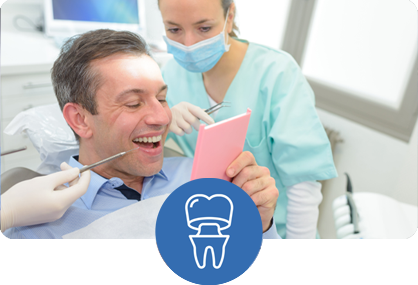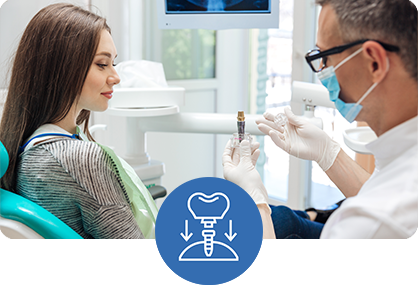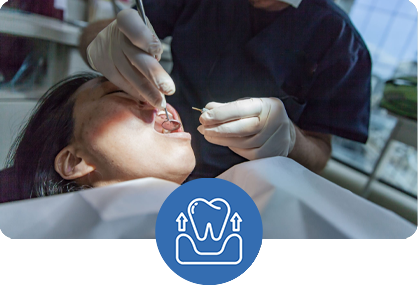Dental crowns are tooth-shaped restorations that cover damaged or weakened teeth, providing structural reinforcement and aesthetic enhancement. Dental crowns and bridges serve dual purposes in restorative dentistry, addressing both functional and cosmetic concerns. These custom-fabricated restorations are precisely fitted over your existing tooth structure, delivering enhanced strength, protection, and improved appearance. Whether addressing a fractured tooth, extensive decay, or aesthetic improvement of a malformed tooth, dental crowns offer versatile solutions for numerous dental conditions.
Key Considerations for Selecting Dental Crowns
- Evaluate tooth location and functional requirements when selecting crown material
- Assess durability needs based on occlusal forces and chewing patterns
- Consider aesthetic requirements, particularly for anterior teeth
- Consult with your dental professional for personalized recommendations
- Understand the treatment process and post-procedural care requirements
Understanding Dental Crowns
Dental crowns are prosthetic devices designed to completely encapsulate damaged or compromised teeth, providing comprehensive restoration of form and function. Dental crowns and bridges represent fundamental components of modern restorative dentistry, offering reliable solutions for maintaining oral health and aesthetics. These precision-engineered restorations are individually crafted to integrate seamlessly with your existing dental anatomy, ensuring optimal fit, comfort, and longevity. From treating structural damage to enhancing smile aesthetics, dental crowns address a comprehensive range of clinical indications with predictable outcomes.
Types of Dental Crown Materials
Contemporary dental crown materials offer distinct advantages tailored to specific clinical requirements and patient preferences:
- Porcelain/Ceramic crowns: Provide excellent aesthetic properties with superior color matching and translucency characteristics. These biocompatible restorations are particularly suitable for anterior applications and patients with metal sensitivities.
- Metal crowns offer exceptional durability and fracture resistance, making them well-suited for posterior teeth exposed to high occlusal forces. Fabricated from noble or base metal alloys, they provide superior longevity. However, due to their limited aesthetic appeal, metal crowns are now less commonly used than in the past, with many patients and clinicians opting for tooth-colored alternatives.
- Porcelain-fused-to-metal (PFM) crowns: Combine the strength of metal substructures with the aesthetic qualities of porcelain veneering. This hybrid approach provides balanced performance for both functional and cosmetic requirements.
- Zirconia crowns: Represent advanced ceramic technology offering exceptional strength and aesthetic properties. These biocompatible restorations demonstrate superior fracture resistance while maintaining natural tooth appearance.
Each material category presents unique characteristics, making it essential to compare dental crown types and benefits to determine optimal selection. Consider factors including mechanical properties, aesthetic requirements, cost considerations, and individual patient needs when making material decisions.
Factors to Consider When Choosing a Dental Crown
Selecting the appropriate crown restoration requires careful evaluation of multiple clinical and patient-specific factors. This comprehensive assessment ensures optimal treatment outcomes and long-term success.
Aesthetic Considerations
For anterior restorations, achieving natural appearance is paramount to treatment success. Color matching, translucency, and light reflection properties must be carefully evaluated to ensure seamless integration with existing dentition. Full mouth restoration strategies emphasize comprehensive aesthetic planning for optimal smile harmony. Advanced shade selection protocols and digital imaging technologies enable precise color matching and predictable aesthetic outcomes. Your dental professional utilizes sophisticated shade guides and computer-assisted design to ensure your restoration blends imperceptibly with your natural teeth.
Durability and Longevity
Material selection significantly impacts restoration longevity and clinical performance. Understanding the mechanical properties and expected service life of different crown materials enables informed decision-making:
| Material | Strength | Aesthetics | Expected Longevity |
|---|---|---|---|
| Porcelain | High | Excellent | 10-15 years |
| Metal | Very High | Limited | 15-20 years |
| PFM | High | Good | 10-15 years |
| Zirconia | Very High | Excellent | 15-20 years |
The Dental Crown Procedure
Crown placement follows a systematic protocol designed to ensure optimal fit, function, and aesthetics. The comprehensive treatment process typically involves:
- Initial examination and diagnostic imaging: Your dentist conducts thorough clinical assessment and radiographic evaluation to determine treatment feasibility and plan the restoration approach.
- Tooth preparation: Precise reduction of tooth structure creates appropriate space for crown placement while maintaining adequate retention and resistance form for long-term stability.
- Provisional restoration: A temporary crown protects the prepared tooth and maintains function and aesthetics during the fabrication period of your permanent restoration.
- Final crown delivery: The completed restoration undergoes careful evaluation for fit, occlusion, and aesthetics before permanent cementation and final adjustments.
Post-procedural care is essential for optimal healing and restoration longevity. Aftercare protocols for dental procedures ensure successful treatment outcomes. This includes maintaining excellent oral hygiene, avoiding potentially damaging foods during the initial healing period, and attending regular follow-up appointments to monitor restoration integrity and surrounding tissue health.
Maintaining Your Dental Crown
Proper maintenance protocols are essential for maximizing crown longevity and maintaining optimal oral health. Implement these evidence-based care strategies:
Daily Oral Hygiene
Maintain meticulous brushing with fluoride toothpaste
Interdental Cleaning
Regular flossing around crown margins
Dietary Considerations
Avoid excessive force and adhesive foods
For comprehensive maintenance guidance, review these evidence-based dental crown maintenance recommendations. Consistent adherence to proper care protocols significantly extends restoration longevity and supports overall oral health.
Potential Complications
While dental crowns demonstrate high success rates, awareness of potential complications enables early intervention and optimal outcomes. Common concerns include:
- Post-cementation sensitivity: Transient thermal sensitivity is normal following crown placement and typically resolves within several weeks. Persistent symptoms may indicate improper fit or underlying pulpal pathology requiring evaluation.
- Crown mobility: Restoration loosening may result from cement dissolution or inadequate retention form. Avoid manipulation of loose crowns and seek immediate professional evaluation to prevent further complications.
- Gingival irritation: Soft tissue inflammation may occur due to excess cement, allergic reactions, or marginal discrepancies. Proper oral hygiene and professional monitoring help prevent and address these issues.
Early recognition of complications is crucial for successful intervention. Understanding when to seek professional dental care ensures prompt treatment and prevents minor issues from progressing to more complex problems.
Advanced Dental Crown Technologies
Contemporary dental technology has revolutionized crown fabrication and delivery, enabling enhanced precision, efficiency, and patient comfort. Current technological advances include:
- Digital impression systems and 3D printing: Provide exceptional accuracy in crown design and fabrication while eliminating traditional impression materials.
- CAD/CAM technology: Enables same-day crown delivery through computer-aided design and manufacturing, reducing treatment time and interim restoration requirements.
- Digital smile design: Allows comprehensive visualization of treatment outcomes before fabrication, ensuring patient satisfaction and predictable results.
These technologies are also utilized in complex procedures such as full arch dental implant rehabilitation, demonstrating their versatility and clinical effectiveness. Advanced fabrication methods not only improve restoration quality and fit but also enhance patient experience through reduced treatment time and increased comfort.
Making Your Decision
Crown selection requires collaborative decision-making between patient and dental professional, considering individual clinical needs, aesthetic preferences, and functional requirements. Your dentist will evaluate multiple factors to recommend the most appropriate treatment approach for your specific situation, ensuring optimal outcomes and patient satisfaction.
Conclusion
Selecting appropriate dental crown restoration requires careful consideration of material properties, clinical indications, aesthetic requirements, and long-term maintenance needs. Through comprehensive evaluation of these factors and collaboration with your dental professional, you can achieve predictable treatment outcomes that restore both function and aesthetics. Proper selection and maintenance of dental crowns contribute significantly to long-term oral health and patient satisfaction.
“Optimal crown selection requires comprehensive evaluation of patient-specific factors, material properties, and clinical indications. Professional consultation ensures evidence-based treatment decisions that maximize long-term success and patient satisfaction.”
Whether crown restoration is indicated for structural rehabilitation or as part of comprehensive treatment protocols such as temporomandibular joint therapy, appropriate material selection and treatment planning ensure successful outcomes. By understanding available options, evaluating individual needs, and maintaining collaborative relationships with your dental care team, you can achieve lasting restoration success that enhances both oral health and smile aesthetics.

 718-979-2121
718-979-2121













